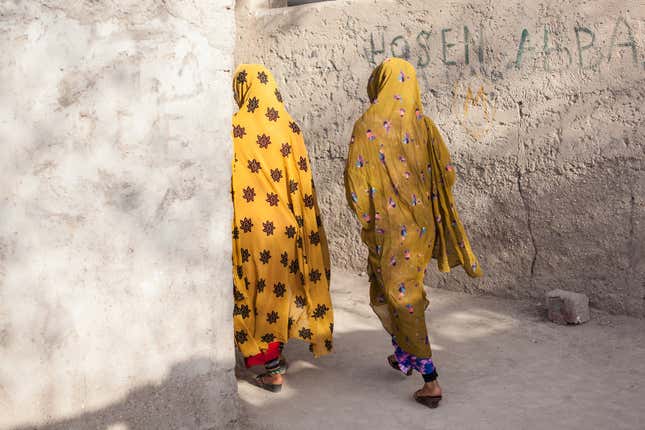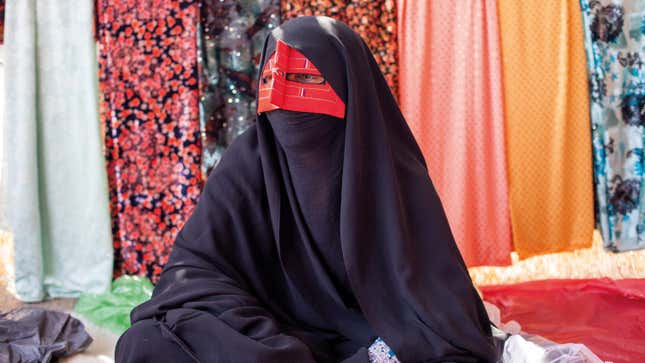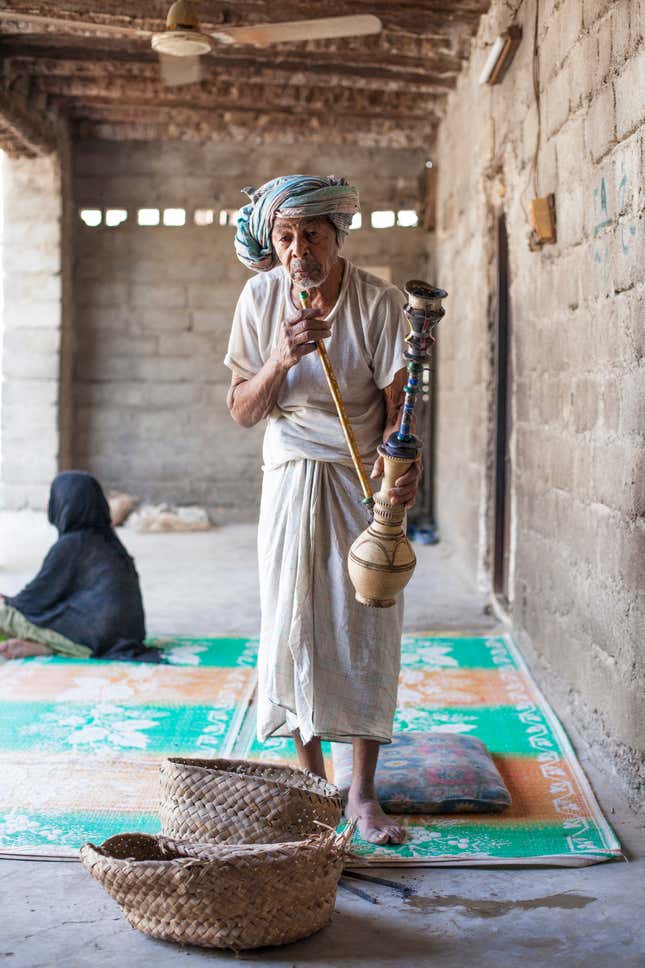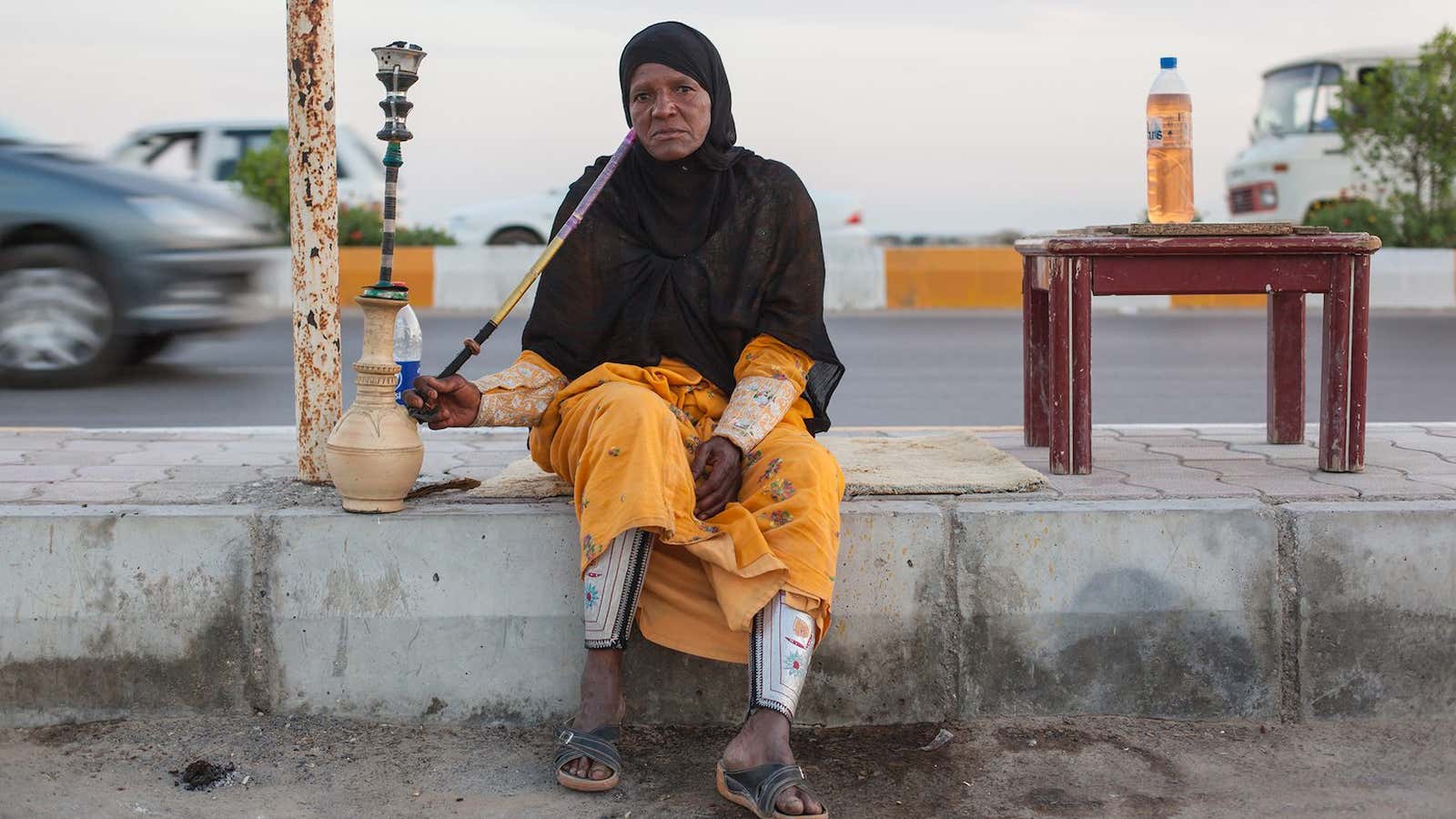German-Iranian photographer Mahdi Ehsaei has spent the last three years documenting a lesser known community in his home country: Iranians of African heritage. His portraits, taken in Iran’s southern province of Hormozgan, document the country’s participation in the Indian Ocean slave trade until the practice was abolished in 1928. The photos appear in his recently published book, Afro-Iran, the Unknown Minority.
Few Iranians are aware of this part of their history or even the presence of Afro-Iranians in their country, according to Ehsaei, who first became interested in the topic after watching a team from Hormozgan play in a football match. He noticed the team’s fan leader was a black Iranian man who led the supporters in a song that struck Ehsaei as more African than Iranian. Ehsaei began researching the topic and eventually raised money online to fund part of the project.
Ehsaei spoke to Quartz about his book, what it means to be Afro-Iranian, and the importance of acknowledging the influences of other cultures on a country.

Quartz: What did you find most surprising while doing this project?
Ehsaei: Before I started my research, I had never thought that the history of Afro-Iranian people would stretch back hundreds of years. I was not the only one. Many Iranians I spoke to didn’t even know that black Iranians have lived in our country for centuries. It was very difficult for me to find any books or information about this community and there was also no visual documentation of this minority.
The most interesting fact for me is that Afro-Iranians have influenced the culture of a whole region. If you go to southern Iran you see people with colorful and vivid clothes and you will also notice a difference in the music, rhythms and dance style of these people in comparison with other parts of Iran.

What is your aim in portraying this community?
I deliberately portrayed people who usually are not associated with Iran, who barely get a chance to speak or play a role in the current representation of the Iranian history. My intention is to give the society an understanding of the not shown face of this country. Afro-Iran deals with the human being, his environment, and the landscape in which he lives in.

With the book I am able to introduce the widely unknown Afro-Iranians to the public. I hope to reach a wide audience with it since this, for me, is an undocumented chapter of the African diaspora that needs to be told.
How did the people you photographed react?
Some of them were surprised why I wanted to portray someone at the beach and what was interesting about that. Some don’t like to be photographed, some like [it], and some don’t care.
When I got the chance to have a conversation with the subjects, their views changed. I explained the aims of my project and my intentions, that I wanted to present and capture the diverse and lesser known people from the southern parts of Iran in my portraits.
How would you describe the Afro-Iranian community?
Aside from their color and their concentration in particular locations, Afro-Iranians aren’t any different than other Iranians. They feel Iranian and feel uncomfortable when asked about their origins. Some of them know of their cultural background, some don’t.

I remember a black Iranian telling me how, when he was traveling to another city in Iran, people thought he was a tourist. This is something that happens to me here [in Germany] as well, because I don’t look German to some Germans. It is a fact that some Iranians think that black Iranians do not look Iranian. This kind of view is something I want to change with my work.
This interview was edited for length and clarity.
